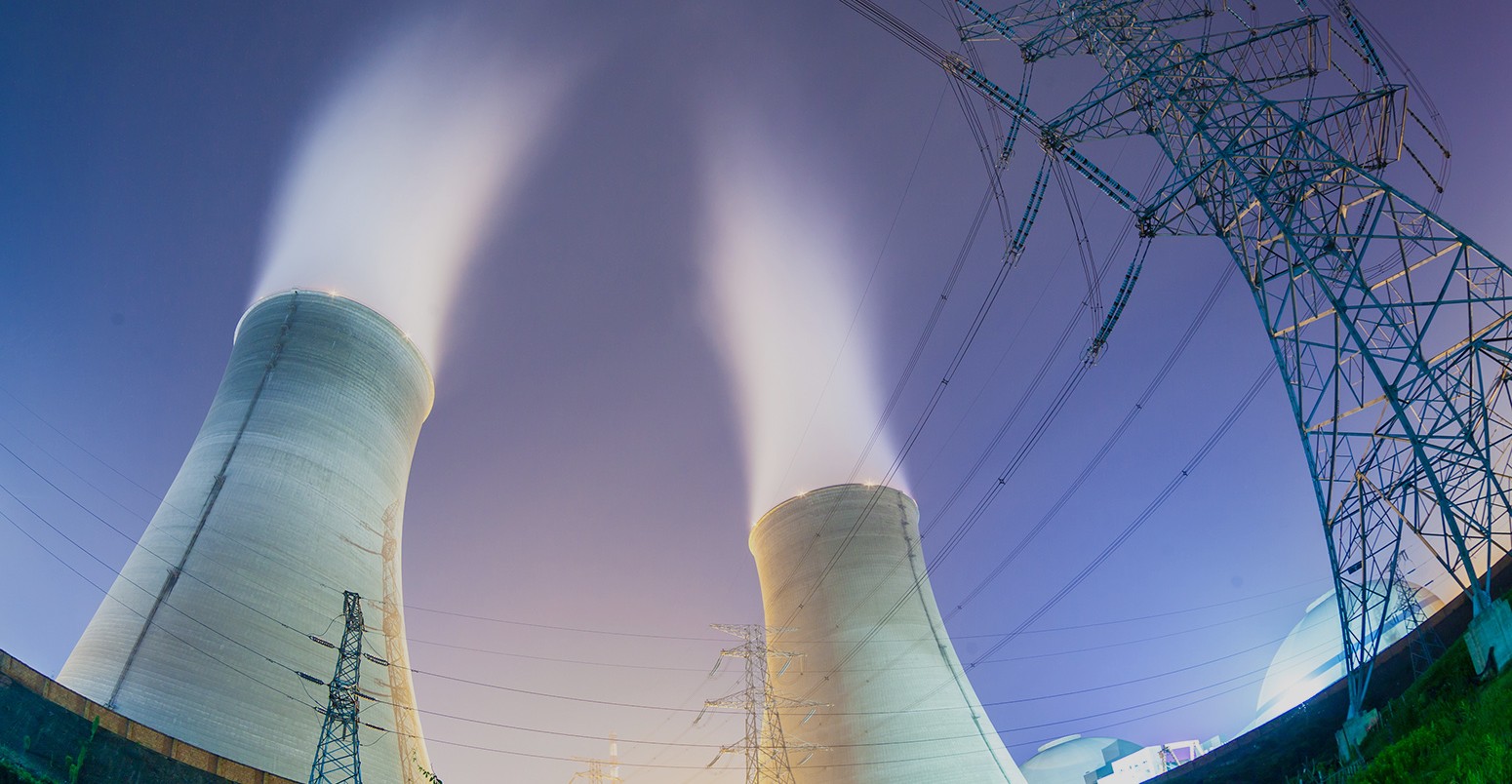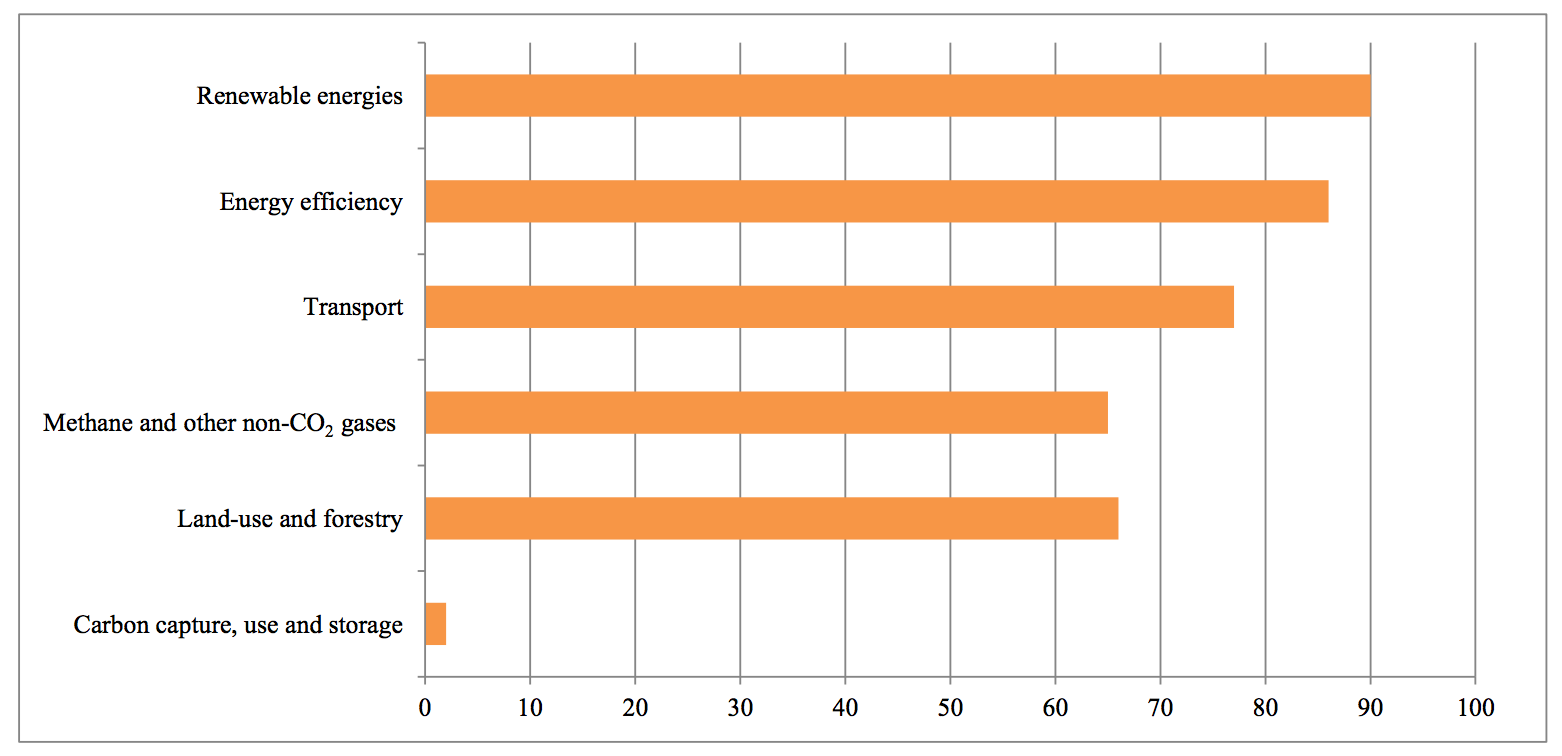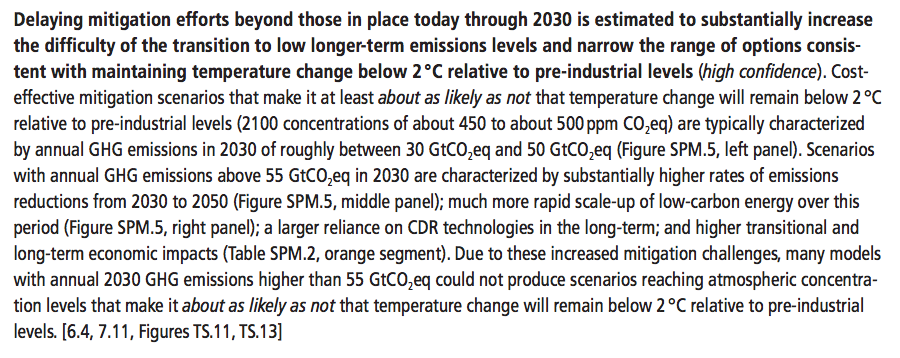UN report: Climate pledges fall short of cheapest route to 2C limit
Simon Evans
10.30.15Simon Evans
30.10.2015 | 5:51pmLow ambition in countries’ climate pledges means avoiding dangerous warming will be harder and more costly than it could have been, according to new UN analysis.
Today’s synthesis report, from the UN’s climate body (UNFCCC), aggregates the 146 Intended Nationally Determined Contributions (INDCs) that had been received by 1 October. It says emissions in 2030 would exceed a cost-effective path to 2C, the internationally agreed safety limit.
UNFCCC executive secretary Christiana Figueres said the pledges, if implemented, would reduce expected warming of 4-5C to around 2.7C. While the ambition is too low to avoid 2C, she added that current pledges are a “foundation on which even higher ambition can be built”.
Carbon Brief looks at the numbers behind the UN’s INDC report and what they mean for 2C.
Pile of pledges
The UNFCCC has aggregated the impact of 146 INDCs, which together cover all developed nations, three quarters of developing nations and 86% of global greenhouse gas emissions. After the 1 October cut-off for the report, the pledge count has risen to 156, covering 92% of emissions.
Of the 146 pledges assessed, 127 offer quantified targets to tackle emissions. Some 59 of these targets are set relative to business as usual emissions, while 31 set absolute goals. Another eight pledge to reduce emissions intensity and three offer peak emissions years.
The pile of pledges to limit emissions has therefore more than doubled in size, the UNFCCC says, compared to the 61 parties that had previously made commitments for the years up to 2020.
More than half of the INDCs say they will use, or are considering using market based mechanisms. The UNFCCC also breaks down parties’ priorities, as they appear in the INDCs (chart below).
The report finds renewables, energy efficiency and transport to be priority areas for at least half of parties.
In contrast, carbon capture and storage is listed by only a handful of nations. Nuclear power, not shown in the chart, was listed as a priority in seven INDCs, Figueres told journalists.
Emissions impact
What is the emissions impact of all these climate mitigation promises? The report says emissions would reach 56.7GtCO2e in 2030 if the INDCs are fully implemented, with a range of 53.1 to 58.6GtCO2e. This would be 37-52% above 1990 levels and 11-22% above 2010 levels.
Though this means emissions would continue to rise, it will be at a slower rate of growth. Without the INDCs, emissions in 2030 would have been expected to reach 60.3GtCO2e, the report says.
It’s worth comparing the impact of the INDCs with where things stood a year ago, before the pledges had been drawn up. The November 2014 emissions gap report from the UN Environment Program (UNEP) projected that 2030 emissions would be between 56 and 59GtCO2e, given policies in place at the time.
This suggests the INDCs do represent an improvement in ambition, albeit a relatively small one.
However, the cheapest path to limiting warming to 2C above pre-industrial levels would require emissions in 2030 to be around 41.6GtCO2e, the report says. The figure is drawn from scenario analysis from the Intergovernmental Panel on Climate Change (IPCC), which puts emissions at between 30 and 50GtCO2e in 2030 in its most cost-effective 2C pathways.
Thus, the 3.6GtCO2e reduction brought about by the INDCs by 2030 would be barely one-fifth of that required for a cost-efficient path to 2C. That doesn’t mean the 2C limit is out of reach, the UNFCCC insists, but it does mean more effort and higher costs later on.
Here’s how the IPCC describes the consequences of emissions in 2030 remaining above 55GtCO2e, as is the case with current INDCs.
Key points to take from the IPCC’s findings are that getting back on a 2C path after 2030 would mean heavier reliance on negative emissions technologies such as BECCs and “higher transitional and long-term economic impacts”.![]()
2C out of reach?
Making up for inadequate efforts between now and 2030 with more rapid action afterwards would make avoiding 2C nearly 50% more expensive, the IPCC report says.
Moreover, the IPCC suggests 2C may in fact be impossible without stronger pre-2030 action. It says: “many models…could not produce scenarios” that are consistent with a 50% chance of limiting warming to below 2C, if emissions in 2030 are above 55GtCO2e.
In other words, unless efforts before 2030 are increased, the already-difficult task of avoiding 2C of warming could become unattainable. Glen Peters, senior research at Norwegian climate institute CICERO tells Carbon Brief:
To get to 2C starting with 55GtCO2e in 2030 (as in the INDCs) amplifies the challenges that many argue are already infeasible…If 2C is to remain in the game, then the INDCs have to be ratcheted up (as opposed to having deeper mitigation after 2030).
Summing up the findings, Figueres told journalists:
It is a very good step. It is actually a remarkable step, but it is not enough.
She said December’s Paris climate summit must now agree on how to give the INDCs a clear legal status, and how to raise ambition in future so as to ultimately comply with the 2C limit. While agreeing the pledges fall short, Figueres emphasised the clear message they already send:
We are truly, incontrovertibly and very decisively moving down towards a transition to a low-carbon economy. That transition has already started.
Alternative analysis
The UNFCCC report joins several other attempts to add up the impact of current climate pledges. The aggregate impact of INDCs so far would be to limit warming to 2.7C, according to analysis from the International Energy Agency (IEA) and Climate Action Tracker.
These studies assume mitigation efforts continue at a similar level of ambition beyond 2025 or 2030, after existing pledges run out. If there were no further action after 2030, then warming could reach as much as 5C by 2100, according to analysis from MIT’s energy and climate outlook 2015.
Climate Interactive estimates 3.5C of warming by 2100, assuming climate efforts continue after 2030 but at a lower level. Climate Action Tracker has detailed explanations of these differences.
While assumptions about emissions after 2030 are the biggest reason for variation between the different estimates, the reports differ in how confident they are that their stated temperatures won’t be exceed.
The definition of the internationally-accepted goal is to is to give ourselves a “likely” chance of staying below the 2C warming limit, corresponding to a 66% probability. Yet Climate Action Tracker says it is only 50% likely that warming will remain below 2.7C with current INDCs, meaning it’s just as likely that we’ll exceed that figure as stay below it..
In other words, this 2.7C figure is not directly comparable with the 2C limit, and the gap between current ambition and what would be needed to avoid dangerous warming is larger than it appears.
A more comparable estimate of future warming under the INDCs comes from the European Commission. It finds emissions could peak just before 2030, with warming “likely” to remain below 3C by the end of the century.
Media reaction
The UN’s report was widely covered in the press. Most articles focused on the message that the INDCs will not limit temperature rise to 2C. The Guardian quotes Angola’s Giza Gaspar-Martins, head of the UN’s least developed countries’ negotiating bloc, as saying that the analysis shows “the urgent need to address the lack of ambition within the INDCs”.
The Daily Mail also focuses on the report’s message that temperatures will surpass the 2C temperature threshold, although growth in carbon emissions will be at a slower rate.
The BBC quotes an expert from the World Resources Institute, who points out that 105 INDCs contain concrete mitigation pledges, compared to 27 prior to Copenhagen.
The Financial Times adopts a more positive tone, pointing to an “unprecedented slew” of climate plans, which should make a “significant dent” in the growth of emissions, and quotes IPCC lead author Niklas Höhne as saying the 2C goal remains within reach.
The Washington Post runs two articles: an Associated Press piece focusing on Christiana Figueres’s comments in Berlin today that the submitted INDCs are “not enough”, and another by its staff writer Chris Mooney, which includes a brief run-down of the numbers contained in the report, and how they size up against the carbon budget for 2C.
Reuters says that the report has been welcomed by financial investment groups, while Carbon Pulse looks at how carbon markets are being included in national efforts. This includes whether rich nations should be able to buy their way out emissions reductions (they shouldn’t, said Christiana Figueres).




